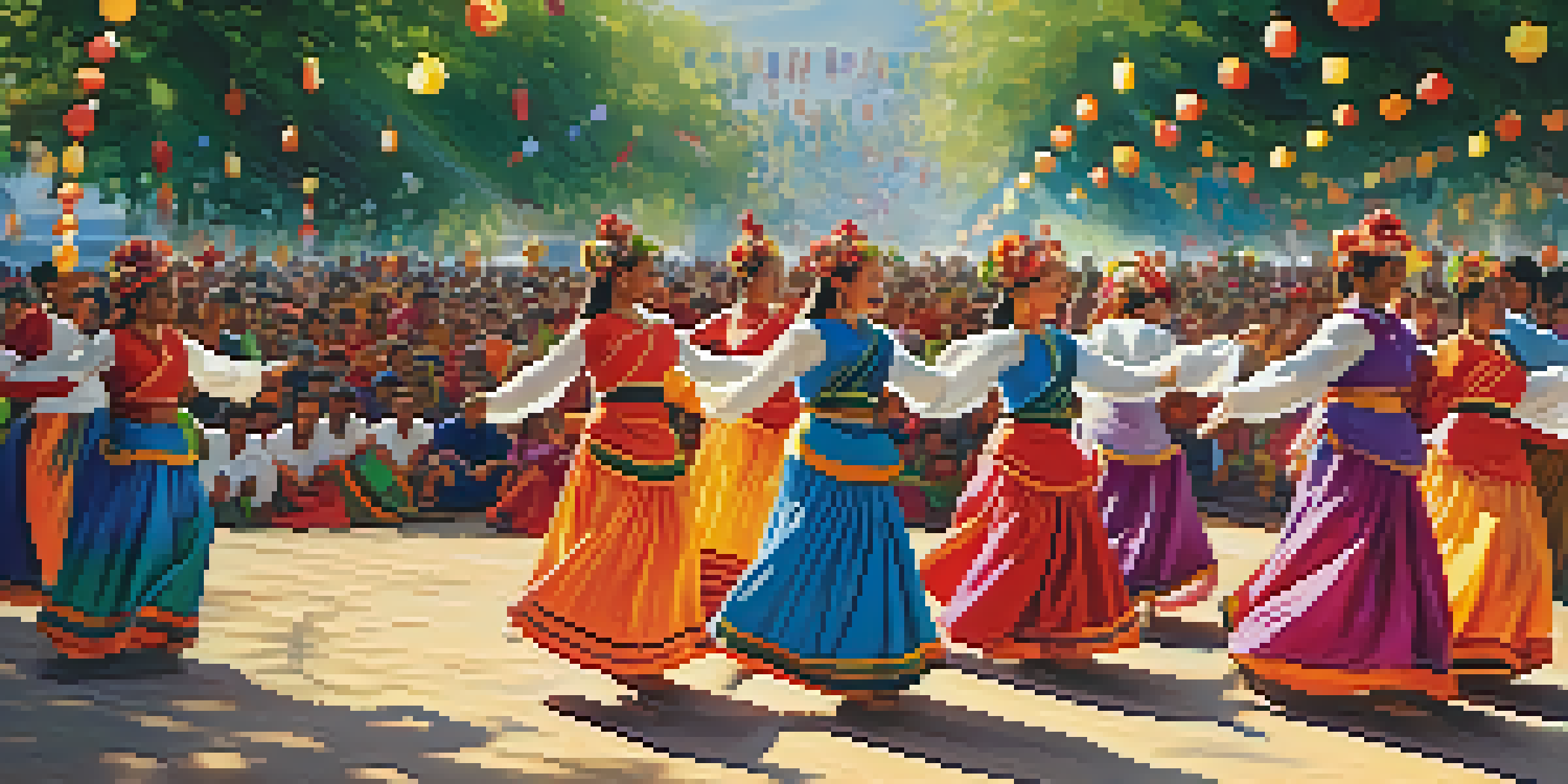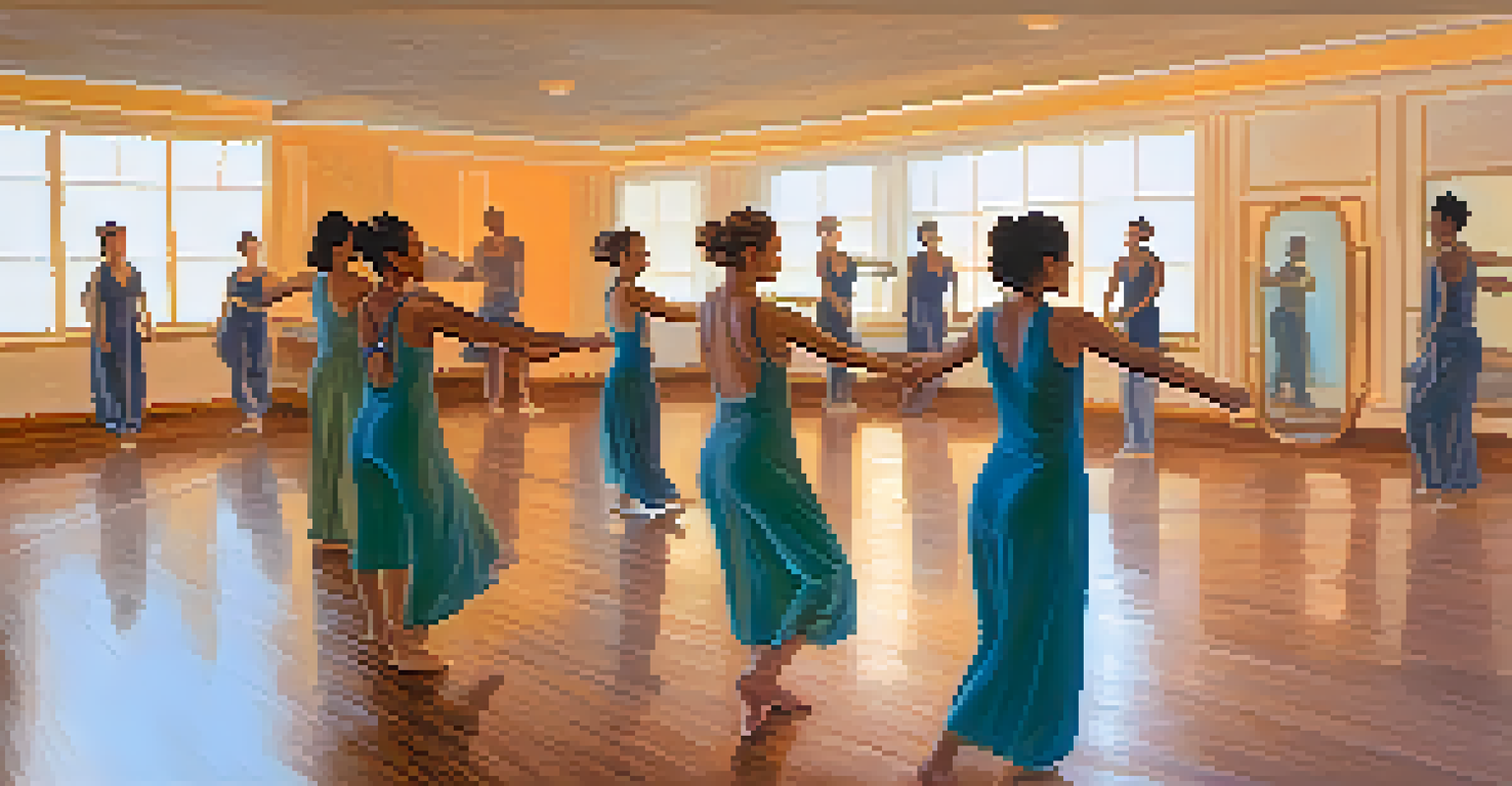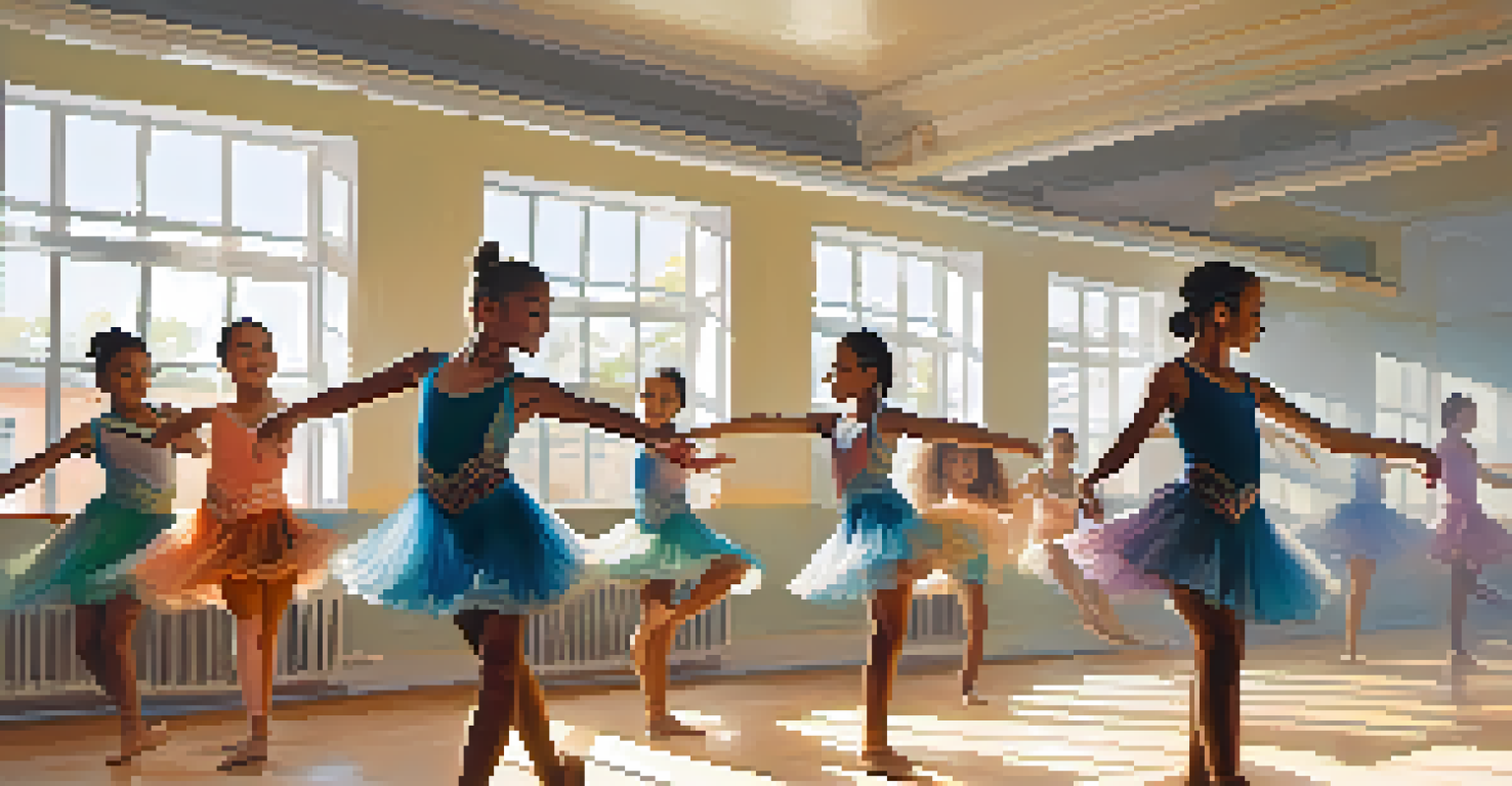Cultural Expressions: Dance as a Language of Identity

Dance: A Universal Language Across Cultures
Dance has long been celebrated as a universal form of expression, transcending language barriers and cultural divides. From the intricate movements of ballet to the vibrant rhythms of African dance, each style tells a story unique to its cultural roots. This shared language allows individuals to communicate emotions, traditions, and histories in ways that words often cannot.
Dance is the hidden language of the soul.
For instance, consider the traditional dances of Indigenous peoples, which often embody their connection to the land and spirituality. Each movement is steeped in meaning, acting as a bridge between generations and preserving vital aspects of their identity. This illustrates how dance serves not just as entertainment, but as a vital medium for cultural preservation.
In contemporary society, we see dance evolve, incorporating elements from various cultures. This fusion not only enriches the art form but also highlights our interconnectedness, reminding us that while we may come from different backgrounds, our experiences and expressions can resonate on a deeper level.
Dance as a Reflection of Personal Identity
Beyond cultural narratives, dance also serves as a powerful vehicle for personal identity. Individuals often use movement to express their feelings, experiences, and identities in ways that might be challenging to articulate verbally. Whether it's through hip-hop, contemporary dance, or traditional forms, people can convey their stories and struggles through rhythm and movement.

Take, for example, the rise of street dance. Originating from urban environments, it reflects the struggles, joys, and resilience of those communities. Dancers often use this style to reclaim their identities, showcasing their heritage and personal battles through powerful choreography.
Dance as Cultural Expression
Dance transcends language barriers and serves as a vital medium for preserving cultural identity and traditions.
This personal expression can also foster community and connection among dancers. Sharing a dance floor creates a space where individuals can come together, celebrate their differences, and find common ground through the language of movement.
The Role of Dance in Cultural Festivals
Cultural festivals around the world highlight the significance of dance in celebrating heritage. These events provide a platform for communities to showcase their traditional dances, allowing them to share their stories with a broader audience. Festivals like Diwali in India or Carnival in Brazil exemplify how dance is interwoven with cultural expressions and communal identity.
Dance is the joy of expression and the joy of physicality, it’s a celebration of life.
During these vibrant celebrations, dance becomes a form of storytelling, where each movement articulates the collective history and values of the community. For instance, the colorful samba rhythms of Carnival not only entertain but also celebrate the cultural syncretism of Brazil, reflecting its rich history and diverse influences.
Such festivals also promote inclusivity, inviting people from different backgrounds to partake in the celebration. This communal experience fosters understanding and appreciation for diverse cultures, reinforcing the idea that dance can unite us in our shared humanity.
Dance as a Tool for Social Change
Throughout history, dance has played a pivotal role in social movements, using the art form as a tool for activism and change. From the civil rights movement to contemporary climate change rallies, dance has been employed to convey urgency and galvanize communities. It’s a dynamic way to raise awareness and inspire action, often sparking conversations that lead to meaningful change.
For example, performances that incorporate protest elements can effectively communicate the struggles faced by marginalized communities. Dancers use their bodies to express solidarity, resistance, and hope, turning the stage into a powerful platform for advocacy. This not only captivates audiences but also invites them to reflect on pressing social issues.
Dance Fosters Personal Identity
Through movement, individuals express their emotions and experiences, creating a powerful connection within communities.
Thus, dance transcends mere performance; it becomes a catalyst for dialogue and understanding. As audiences witness these movements, they are often moved to engage, reflect, and act, proving that dance can be a formidable force in the quest for justice and equity.
The Evolution of Dance in the Digital Age
The advent of technology has significantly transformed the landscape of dance, allowing for new forms of expression and connection. Social media platforms like TikTok and Instagram have popularized dance challenges, creating a global community where people can share their unique styles and interpretations. This digital revolution has made dance more accessible than ever before.
For instance, viral dance trends often blend various cultural influences, showcasing the beauty of diversity while fostering creativity. These platforms not only amplify individual voices but also encourage collaboration between dancers from different backgrounds, enriching the art form as a whole.
However, this evolution also raises questions about cultural appropriation and authenticity. As dance continues to adapt to the digital age, it’s essential to remain mindful of the origins of certain styles and to respect the cultural contexts from which they emerge.
The Healing Power of Dance
Dance is not just an art form; it’s also a powerful means of healing. Many therapeutic practices incorporate dance to promote emotional and physical well-being, allowing individuals to express feelings that are otherwise hard to articulate. This form of movement therapy can be particularly beneficial for those dealing with trauma or mental health challenges.
For example, dance movement therapy encourages participants to explore their emotions through movement, fostering a deeper connection to their bodies and experiences. This therapeutic approach can lead to increased self-awareness, emotional release, and a sense of empowerment.
Dance Promotes Social Change
Throughout history, dance has been a dynamic tool for activism, raising awareness and inspiring action on pressing social issues.
Moreover, community dance initiatives often create supportive environments where individuals can connect and heal together. By sharing their stories through dance, participants can find solace in the collective experience, reinforcing the idea that movement can be a source of comfort and healing.
Embracing Diversity in Dance Education
As we explore the significance of dance as a cultural expression, it’s crucial to consider the role of education in promoting diversity. Dance education programs that embrace a variety of styles and cultural backgrounds can foster a greater appreciation for different traditions and techniques. This inclusive approach not only enriches students’ experiences but also encourages creativity and exploration.
Schools and community centers that offer diverse dance classes enable students to connect with their heritage while learning about others. For instance, incorporating traditional dances from various cultures helps students understand the stories and values embedded in each movement, fostering respect and empathy.

Ultimately, by prioritizing diversity in dance education, we cultivate a generation of dancers who are not only skilled but also culturally aware. They emerge as ambassadors of their own identities and as advocates for the beauty of diversity in the world of dance.